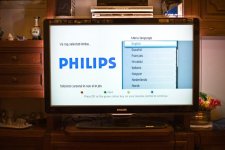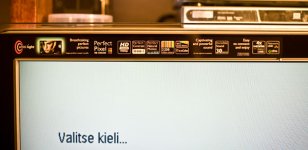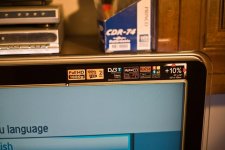Bonfire Redux ha detto:
Complimenti per l'acquisto Hakaro70. Facci sapere i primi commenti.
A me in particolare preme sapere:
- motion blur su immagini in movimento
- fluidità BD
- livello del nero
- input lag sui videogiochi
Grazie in anticipo per tutte le preziose informazioni che saprai darci.
Allora ... premesse:
1) per ora sta lavorando solo in SD, non ho sorgenti HD collegate ma domani sistemo il blu-ray e vediamo.
2) Ho lasciato tutte le regolazioni in automatico perché ho eseguito il menu iniziale che fa da solo la taratura di tutti i settaggi; poi metterò mano manualmente un po' alla volta.
E qui si accettano consigli da chi usa i filippi già da un po'!
Considerazioni:
I colori mi sembrano spettacolarissimi ... nel senso che pare proprio che abbia un gamut molto ampio. Ma non sono intensi o sparati per nulla, c'è una grandissima capacità di sfumare le tonalità.

Ho fatto girare qualche foto e mi pare che le renda benissimo.

Solo che Jpeg sono a 8bit ... volevo provare con delle TIFF provenienti da RAW e quindi a 16bit (12bit effettivi) ma non le visualizza!

Nero: ho fatto girare 3/4 titoli di coda. Foto di farfalle con ampie zone nere. Ragazzi c'è un nero profondo che più profondo di così non si può, è si lucido (perché retroilluminato) ma
denso come la pece! Andate tranquilli su questo.
Motion blur: qui non sono sicurissimo, avendo solo segnali SD e poi non avendo pietre di paragone. A me sembra che un pochino ci sia però poi ho fatto la seguente prova: ho preso un DVD (originale) di un GP MOTO e vedevo se c'erano dei fuori fuoco nelle immagini in movimento. Poi l'ho fatto girare anche sul PC col monitor LCD (purtroppo non ho più CRT

x paragone!): beh fa uguale pari e patta col monitor del piccì!
Dovrei vederlo su un plasma o su un vecchio CRT per capire se un limite che emerge drammaticamente delle riprese SD e magari un fuori fuoco delle telecamere o
un minimo di panning del monitor che perde i pixel. Non so x ora!
Domani collego in HD e vi dico!
Buona notte a tutti!






